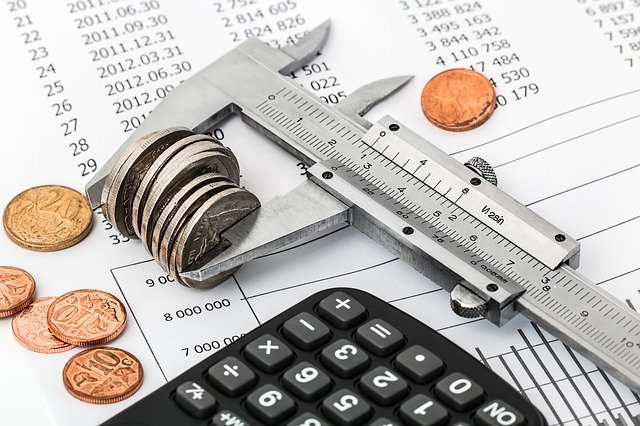On the other hand, too much debt is detrimental to one’s financial health. Buying a median-priced house without the means to pay it places a person in financial distress. Readers only must think back to the subprime mortgage crisis for example. Too many people bought homes with no money down or self-declared income. Hence, they gained debt but lacked the income to pay the mortgage debt.
One way to acquire debt is simply spending more than you earn over time. Unfortunately, it does not take long to become waist-deep in debt by maxing out a few credit cards and adding a car loan. In this case, the question arises, what to do? The simple answer is to spend less than you earn and use the difference to pay down debt. But it’s more complicated than it sounds.
The first thing is to change the actions that got you deep into debt in the first place. This will likely require lifestyle changes. If money constantly flows out and your savings account never increases, it’s time to try lifestyle changes. Assess things you do daily, weekly, or monthly that cause you to spend too much money. An excellent place to start is by asking yourself questions about your life and expenses and determining ways to get out of debt.
Ways to Get Out of Debt
Cut Back on Restaurants
Do you eat at restaurants or order takeout too much? Coffee at Starbucks is good, but it can add up. A tall latte costs more than $3. Buy one five days per week, and the expense totals $15. Now, extend that to 50 weeks; the cost is $750 annually, not a small sum. If most of your meals come from expensive eateries, it may be time to cut back. Not only will your wallet appreciate it, but you will likely eat healthier by making the most of your meals at home.
Try a Less Expensive Car
Is your car too expensive? An expensive item for most people is their car, whether leased or bought. If car loan, repairs, and maintenance expenses are too high relative to your monthly income, it may be time to trade down to one that is less costly. Trying this method may require changing or selling a current car and buying or leasing a cheaper one.
Downsize to a Smaller House
Is your house too expensive? A primary expense for every adult is housing, whether bought or rented. It is probably the single largest item in your budget. According to the rule of thumb, housing should cost no more than 30% of your monthly income. If you are spending more than that, it may be time to downsize to a smaller house or condominium. Of course, cutting mortgage or rental expenses is easier said than done, but it will have the most significant impact over time.
Better Budgeting
The key to not acquiring too much debt in the first place is better budgeting. This is simply a matter of balancing monthly income with expenses and saving the rest. A plan advocated by many financial bloggers is the 50-30-20 Budget popularized by Senator Elizabeth Warren in the 2005 book, All Your Worth: The Ultimate Lifetime Money Plan.
This plan allocates 50% of take-home income to needs, 30% to wants, and 20% to savings. Needs are must-haves for basic living, like healthcare, utilities, food, transportation, etc. Wants are optional, such as cable, vacations, entertainment, etc. These things are nice to have, and you can function without them, although it may be inconvenient. Savings are self-explanatory.
Refinance Existing Debt

One method to reduce monthly debt payments is to refinance existing debt. This method is handy if interest rates were high when you acquired the debt and trended lower. Unfortunately, the opposite is happening in 2022. But still, if rates are higher on your existing debt and you can obtain a lower rate, this will lower monthly payments, total interest paid, and time to complete payment.
Another possibility is consolidating existing debt into one loan or trying a balance transfer card with 0% APR. This approach has risks, so be careful and talk to a credit counselor. Some plans or cards have high fees. Also, some people lack the discipline to complete the payments without adding more debt.
Work Part Time
If you have a full-time job, a part-time job can add income and make extra cash. For instance, retail stores and restaurants typically hire part-time employees. The pay may not be great, but it is extra money. If you take this route, use the part-time job salary to pay down debt. Working a part-time job for six months or a year can put a major dent in your total debt.
Follow a Method
The above ideas are sound. But ultimately, a person may have difficulty deciding how to pay down debt. One idea is to follow a tried and true method, like the Debt Avalanche or Debt Snowball method.
With the Debt Snowball method, you first pay the smallest loan balance, irrespective of interest rates. This method may take longer, but it often motivates people because they see a zero balance on at least one loan earlier. The advantage is it builds better money management habits.
With the Debt Avalanche method, you first pay the debt with the highest interest rate. Often, credit cards have the highest interest rate. Once that is paid off, the borrower would move into the loan with the next highest interest rate, which may be another credit card or possibly an auto loan. The advantage of this method is that less interest is paid over time, and debts are paid faster.
Bottom Line
Stopping debt cycles is challenging. It takes perseverance, lifestyle changes, and developing better habits. An important aspect is to keep track of progress so you stay motivated on your road to becoming debt-free and having financial freedom.
Author Bio: Prakash Kolli is the founder of the Dividend Power site. He is a self-taught investor, analyst, and writer on dividend growth stocks and financial independence. His writings can be found on Seeking Alpha, InvestorPlace, Business Insider, Nasdaq, TalkMarkets, ValueWalk, The Money Show, Forbes, Yahoo Finance, and leading financial sites. In addition, he is part of the Portfolio Insight and Sure Dividend teams. He was recently in the top 1.0% and 100 (73 out of over 13,450) financial bloggers, as tracked by TipRanks (an independent analyst tracking site) for his articles on Seeking Alpha.















